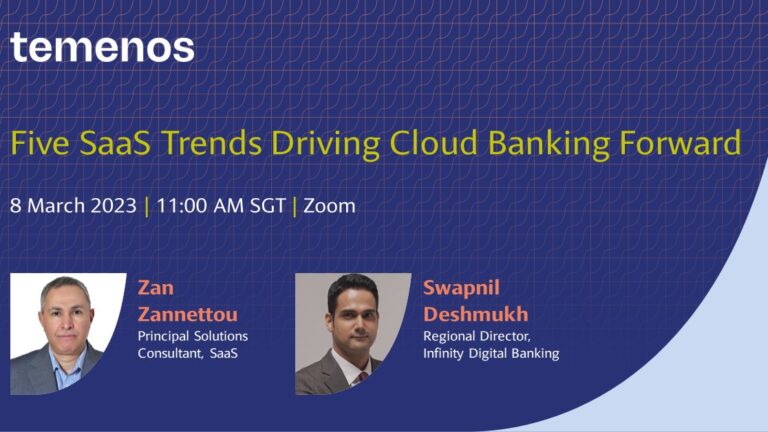Cloud banking has been one of the thematic focuses for banking in the Asia Pacific as we head into 2023. As we begin the year examining the Five SaaS trends driving Cloud Banking forward, we appreciate that globally, banks are steadily increasing their leverage on Cloud Banking to offer more digitized financial services, open new business models like BaaS, and enable essential banking experiences like “personalized banking” and “embedded finance”, which are pivotal in capturing the loyalty of Gen Z consumers as they grow to become the next engine behind global economic growth.
In our report with The Economist, our findings suggest that 72% of IT executives at banks report that incorporating cloud technologies into their organization’s products and services will help them to achieve their business priorities. 82% of banking IT executives also say they have a clear strategy for adopting cloud technologies.
Similarly, in the Philippines, we see banks adopting the cloud across the board. From the release of Resolution 1286 by Bangko Sentral ng Pilipinas to the initiation of Cantilan Bank’s transition to the Cloud with the Asian Development Bank, Cloud Banking is rapidly evolving to become a mainstay in Filipino banking.
As we stand on the verge of a new renaissance in Banking for the Philippines enabled through cloud technologies, we want to pause and reflect on the critical criteria the modern Filipino bank must consider to ensure they reap their maximum return on investments in Cloud Banking. Considering the recent momentum in this space, I find it helpful to map out three essential considerations for successful Cloud Banking in the Philippines.
Consideration #1: Security
First and foremost of these considerations is Security. The essence of Banking is trust. Since the early days of banking, customers have trusted their Banks to keep their assets safe and sound. In today’s digital era, customer expectations remain unchanged, if not elevated. Today’s banks are not just custodians of customer wealth. They are the custodians of their customer’s data.
Data is the emerging asset class that presents unprecedented opportunities for banks and customers. Today’s customers rely on their banks to be the stewards of their digital assets – data. Hence, a bank needs to ensure that the technological infrastructure used to manage such data provides extra security in a time of increasing financial malpractice in the digital age.
Banks considering Cloud Banking need a safe, secure, and reliable platform to hedge against possible infiltration by hackers and cyber assailants. Given the possible risks and reputational costs involved with a potential security breach, it’s paramount that a bank considers a Cloud Banking solution that can bear the utmost responsibility to shoulder that trust when it comes to Customer data. To address this concern, solution providers like Temenos have invested heavily in information security technologies and gained the necessary SaaS certifications and accreditations, such as SOC2 and ISO 27k series. This is part of our effort to undertake proactive security monitoring, incident responses, and resolution, and it provides the modern Filipino bank with state-of-the-art SaaS security artifacts.
Consideration #2: Migration
Once the Bank is satisfied with the security of the Cloud, the next key consideration is the Migration path from existing workloads to cloud-based workloads, especially for mission-critical solutions like core banking or digital channels.
To illustrate, in a recent article by Forbes, a banking executive commented that because banks are experiencing Cloud Banking migration for the first time, the chance of hitting unexpected costs is high. Migration must be done right so that the solution enables the modern Filipino bank to maximize their Cloud Banking experience and realize the fullest potential of Cloud Banking. It implies that the “lift and shift” approach of the past needs to be realigned to a “comprehensive uplift” mindset of the future to enable optimal operational efficiency, streamlining of legacy processes, and maximizing operational cost savings.
For example, a leading bank in ASEAN has signed with Temenos for core banking on the Temenos Banking Cloud and has gone ahead with a Temenos certified partner for its migration exercise. The move is anticipated to enable the bank to offer superior customer propositions with personalized offerings at a fraction of the time and cost. Consequently, it is crucial for the modern Filipino Bank to assess the path to Cloud Banking critically and to thoroughly evaluate its journey with the help of the right partners.
Consideration #3: Regulation
The final key consideration is regulation. Banks must comply with the regulatory needs of the land. And with the advent of the digital age, banking innovation is progressing by leaps and bounds, and its related regulations have also increased exponentially. To put things in perspective, Bangko Sentral ng Pilipinas issued 167 new rules in 2022 alone. It’s one thing for the modern Filipino bank to appreciate and understand these regulations; it’s another thing to adapt, operationalize, and implement these regulator guidelines in a meaningful way that does not escalate the compliance costs of a bank.
In retrospect, the modern Filipino bank needs a Cloud Banking platform that enables the Bank to rapidly adapt to new regulatory guidelines, with recommended best practices, so that its time to compliance can be shortened, reducing its regulatory costs and keeping the bank focused on profitability. To succeed on this front, the modern Filipino bank must govern its Cloud services and report on the right metrics for Data, Risk, and Compliance matters. At Temenos, we believe that this is crucial to help our customers succeed in the future. That’s why we engage with global auditors to audit our solutions periodically so that regulators and banks have the required assurances around our compliance framework. The above ensures that we are equipping our modern Filipino banks with the right tools and oversight capabilities (including audits) to control their regulatory needs fully.
Conclusion
A decision to pivot to the Cloud seems straightforward, but how such a decision could pan out and its ramifications are something to be deliberated over time.
However, to borrow the analogy of “striking the iron while it’s hot,” proverbial wisdom suggests that when an opportunity surfaces, one needs to be able to grab it before one gets left behind. But the iron is “hot,” it may or may not be so easy to strike the iron, especially when the external environment is full of new developments, challenges, and ambiguity.
Here at Temenos, we have partnered with 700+ banks in their journey toward Cloud Banking, and we’re here to help. We’ve provided that seasoned pair of hands to help handle the “heat” so that Filipino banks can focus on what they do best – Banking for The Philippines. If you’re interested to have a conversation with us, we’ll be having our Cloud Forum in the Philippines in 2023, and we’ll like to invite you to come on board and join us in our journey to winning with SaaS to deliver great Cloud Banking experiences for everyday Filipinos.
We look forward to what Cloud Banking can do for you in the Philippines!
Additional Resources
Webinar: Five SaaS Trends Driving Cloud Banking Forward
Hear from Temenos experts in a short engaging session, covering key insights and case studies on the SaaS trends will drive increased adoption of cloud in 2023, and beyond.
Five SaaS Trends Driving Cloud Banking Forward
Here are five Software-as-a-Service (SaaS) trends will drive increased adoption of cloud in 2023, and beyond.

